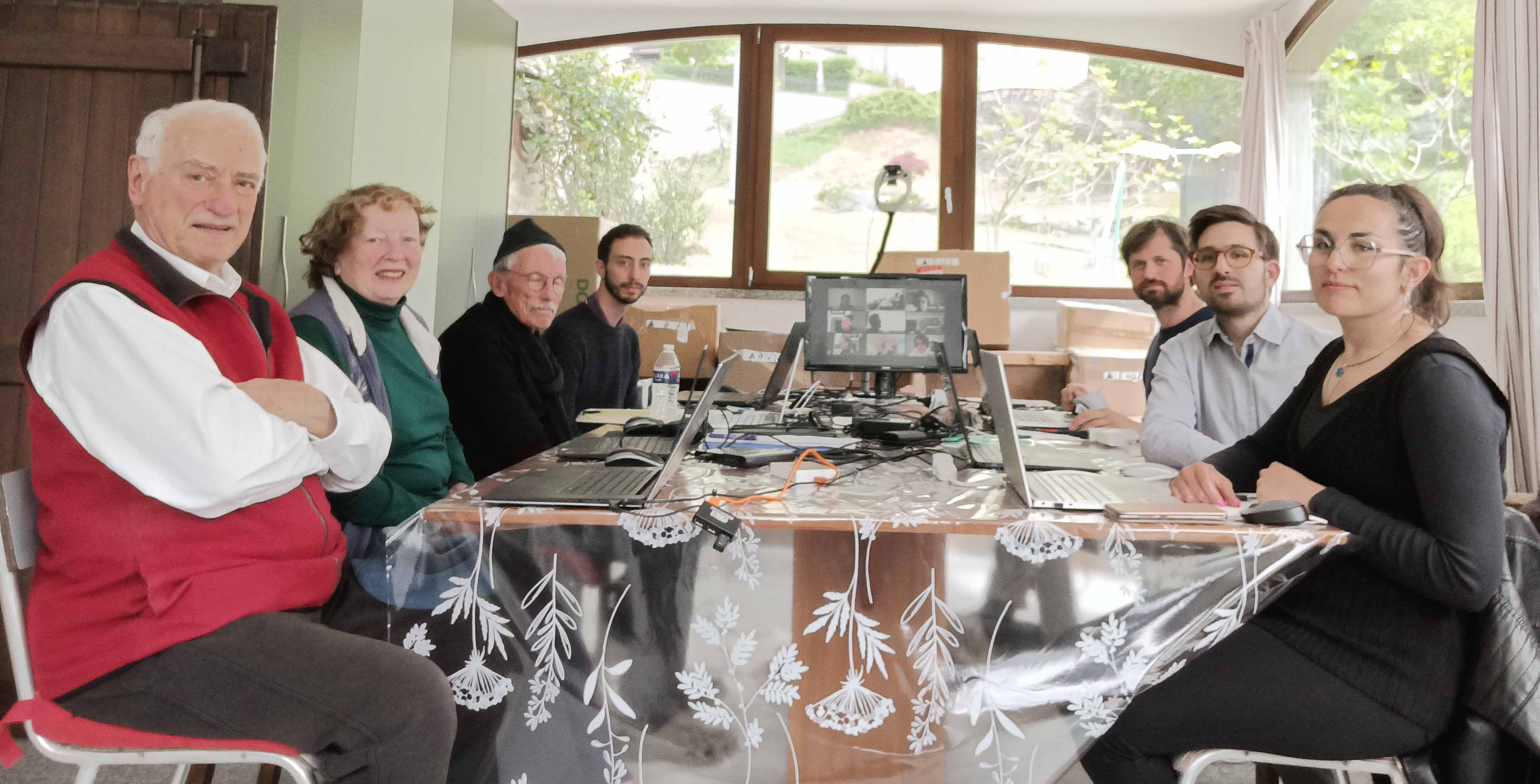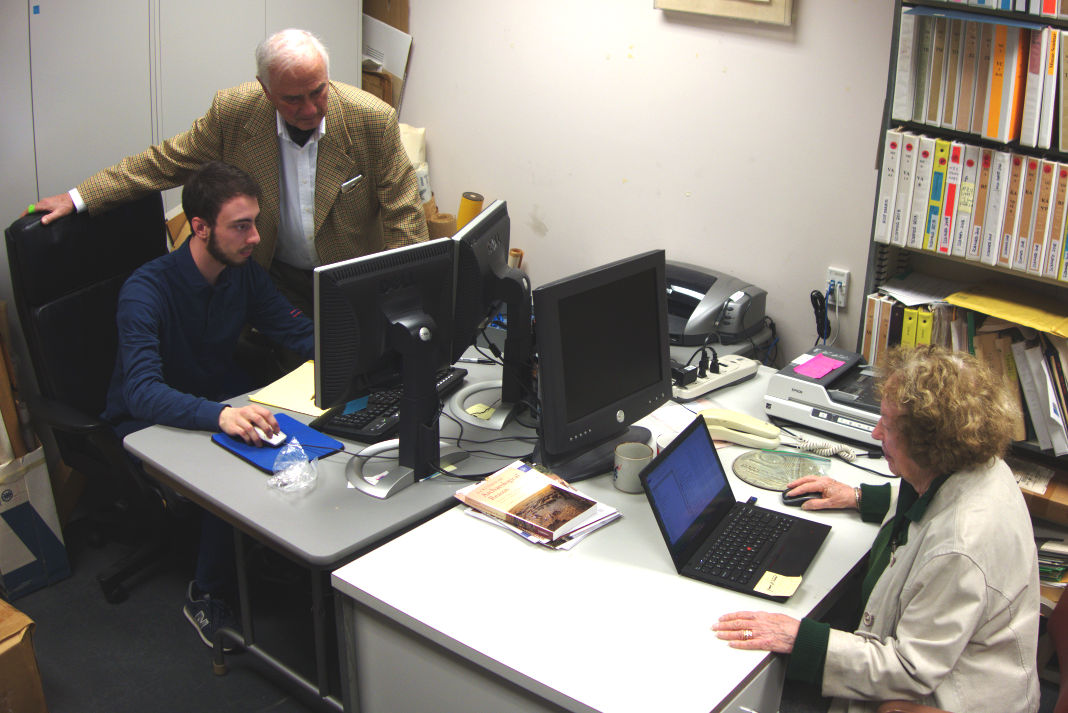Back to top: Programming
2023
Back to top: Programming
June 2023
Back to top: Programming
Workshops “Beola 4a-c”

In June 2023, three workshops were held in Beola (see in detail “Beola 4”). Here are the major achievements regarding website programming:
- tabulation sub-program;
- rlevtion sub-program;
- VWX sub-program;
- relay sub-program.
In addition, Bernardo Forni is to train James Walker on the use of the MID and modified JD programs.
Main results achieved during the workshop “Beola 4a”:
- the tabulation program was completed on June 16;
- the elevation program was completed on June 17;
- the training was ad hoc and completed on June 17;
- VWX program development is progressing and is due to be completed by June 30;
- the relay program is not immediately needed and was postponed indefinitely.
Further goals and results concerning programs have been fulfilled after the end of the workshop “Beola 4c”:
- further development of the programs (particularly MID and VWX);
- conversion of some topical and unit books of the UGR from HTML to the new program MID (developed by Bernardo Forni);
- introduction (by Bernardo Forni) to the functioning of the new programs;
- implementing MID;
- introducing and coaching new collaborators to HTML and Markdown.
Back to top: Programming
May 2023
Back to top: Programming
Workshop “Beola 3”

In May 2023, during the workshop “Beola 3”, one of the main goals for the team was to concretely work on the development of new programs supporting the activities of the project.
Jonah Lynch reported about his work on the Mesopotamian Religion website, stressing the importance of the elaboration of programs creating indices (divided into “topical indices” and “multinodal indices“).
Bernardo Forni described the different programs which are currently in development. The main goals of his works consist in removing frames from the websites by converting them into a new format called MID, “Markdown Input to Display” (an implementation of the previous DABI program), allowing an easier input of data and a better output (both for what concerns display and queries, through an implemented search function). The benefits of this new program are many: just to mention two of the most relevant:
- the possibility of creating direct links (without the need of “redirects”);
- the query function which allows a very easy and complete search on all the pages of the related websites, thus saving time and increasing effectiveness.
Bernardo has also been working on the JD files for the input of data on the Urkesh Global Record, particularly focusing on implementing the “tabulation” section. Furthermore, he also worked on the implementation of the VWX program.
James Walker worked hard in updating many unit books of the Urkesh Global Record, converting some of them into the new MID format (such as A15). He also described the different approaches and programs used in the past, such as Perl, underlining some problems, which need to be faced. James focused both on the left and right-hand sides, stressing some advantages of using MID for the unit books:
- saving time;
- avoiding mistakes due to the use of HTML.
Lorenzo Crescioli worked on the unit books A20 and A6 (the last with the assistance of Amer Ahmad), updating data and converting the units from HTML to MID.
Marco De Pietri focused on updating the whole urkesh.org website, starting converting some sections of it from HTML to MID (specifically, “The Grammar”), with the assistance of Bernardo Forni. Furthermore, he is currently assisting Jonah Lynch and Laerke Recht with the conversion of “Mes-Rel” and CAR websites from HTML to MID.
The fruitful collaboration of the different members of the team allowed the project to envisage soon very important achievements, partially already fulfilled; just to mention the most remarkable ones about programming:
- training with the new program elaborated by Bernardo Forni (MID: "Markdown Input to Display"; see section "Useful material" accessible to members of the staff, through ID and PW);
- reviewing the whole stratigraphy of A15;
- implementing the following programs or part of websites:
- MID improvements and adaptations to the needs of the project (see also the attached PDF with the description of the new input and output system);
- converting (HTML > MID) A15, "The Grammar", and JD (partially);
- making publicly available online the MID version of CAR;
- implementing templates for JD and elaborating a version of this program compatible to MID.
Back to top: Programming
2022
Back to top: Programming
September 2022
Back to top: Programming
Workshop “Beola 2”

During the period September 5–12, 2022, a second workshop (“Beola 2”) was taken in Beola, gathering many members of the Urkesh/Tell Mozan’s staff, involved in different aspects related to the updating and further development of programs running our websites.
On Monday, September 5, the team dedicated the morning specialized session to the technical review of the new UGR (“Urkesh Global Record”) program, while in the afternoon a general session has been taken about the current status and future desiderata of the UGR system as a whole.
Tuesday, September 6, was devoted to two general sessions dedicated to two specific aspects of the UGR system, namely the “left-hand side” (in the morning) and the “UGR Topical Books” (in the afternoon).
On Thursday, September 8, Prof. Giorgio Buccellati presented to the team the new hub website “Cybernetica Mesopotamica”, specifically developed after (and also thanks to) the Balzan Prize.
From Friday, September 9 to Monday, September 12, many separate sessions of work have been dedicated to technical applications of the new UGR programs.
Back to top: Programming
July 2022
Back to top: Programming
Workshop “Beola 1”

During July 13-28, 2022, an intensive period of work (seminar “Beola 1”) gathered together in Beola many people involved in different aspects of the project about the updating of the programs related to “Urkesh Global Record” (UGR), and many other sections of the Urkesh website.
Back to top: Programming
2019
Back to top: Programming
February-March
Back to top: Programming
February 26-March 12, 2019: Digital work at UCLA (with Bernardo Forni)
|
Bernardo Forni, our IT manager, spent ten days at the Mesopotamian Lab of the Cotsen Institute of Archaeology, UCLA, where the server containing all the data of the projects related to Urkesh resides. During his stay, he upgraded the software and hardware to current standards, which made the system safer and faster. He also met with the various members of the Urkesh group in Los Angeles, to better coordinate the joint work: the photo shows him there together with the directors of our projects, Giorgio Buccellati and Marilyn Kelly-Buccellati, working with the server. |
|
 |
Back to top: Programming